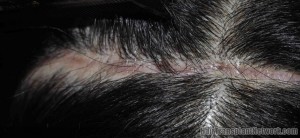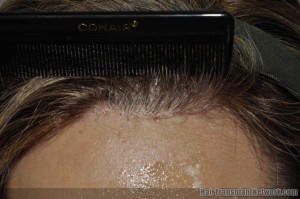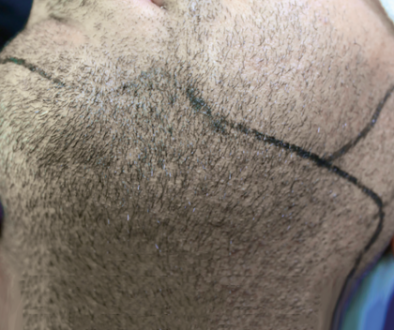How Trichophytic Closure Benefits Hair Transplant Donor Scars
This following article was written by Coalition hair restoration physician Dr. William Lindsey and posted on our Hair Restoration Social Community and Discussion Forums.
 I have posted a few threads before on how trichophytic closures were developed by plastic surgeons for brow lift scars. This technique allows the incision to be placed about 5 hairs behind the hairline, and by beveling the cut, the hair roots are preserved to grow out through and in front of the scar, camouflaging it.
I have posted a few threads before on how trichophytic closures were developed by plastic surgeons for brow lift scars. This technique allows the incision to be placed about 5 hairs behind the hairline, and by beveling the cut, the hair roots are preserved to grow out through and in front of the scar, camouflaging it.
This same technique is now used by many hair restoration surgeons to close donor strip sites and have hair grow through the scar after a few months.
Last week I had the occasion to see a lady who had had what I would describe as a non-trichophytic closure of a brow lift. The scar is fairly wide and has no hair growth through it. Several pictures are shown. She inquired about follicular unit extraction (FUE) repair which we may do at a later date.
Recently, a patient that I’d done a brow lift on in October stopped by with her husband who’d had a hair transplant by me. She’s about 3.5 months post-op and clearly not all of her hair is growing yet, but her scar looks quite good and is nearly undetectable from a foot away. She is an excellent healer, and this gives an example of why trichophytic closures were developed.
William H. Lindsey, MD, FACS
McLean, VA
—-
David – aka TakingThePlunge
Forum Co-Moderator and Editorial Assistant for the Hair Transplant Network, the Hair Loss Learning Center, the Hair Loss Q&A Blog, and the Hair Restoration Forum
Get Proven Hair Loss Treatments at the Best Prices by visiting our new Online Hair Loss Product Store
Technorati Tags: trichophytic closure, hair restoration, hair growth, follicular unit extraction, (FUE), hair transplant





